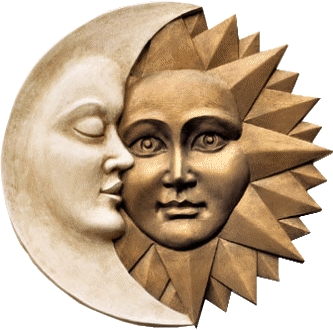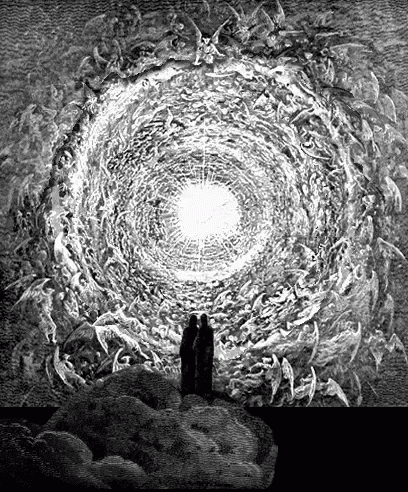[Remaining Astronomy Events For 2020]
- - - - - - - - - - - - - - - - - - - - - - - - - - -
October 21, 22 - Orionids Meteor Shower. The Orionids is an average shower producing up to 20 meteors per hour at its peak. It is produced by dust grains left behind by comet Halley, which has been known and observed since ancient times. The shower runs annually from October 2 to November 7. It peaks this year on the night of October 21 and the morning of October 22. The waxing crescent moon will set before midnight leaving dark skies for what should be a good show. Best viewing will be from a dark location after midnight. Meteors will radiate from the constellation Orion, but can appear anywhere in the sky.
October 31 - Full Moon, Blue Moon. The Moon will be located on the opposite side of the Earth as the Sun and its face will be will be fully illuminated. This phase occurs at 14:51 UTC. Since this is the second full moon in the same month, it is sometimes referred to as a blue moon. This rare calendar event only occurs every few months, giving rise to the term "once in a blue moon".
October 31 - Uranus at Opposition. The blue-green planet will be at its closest approach to Earth and its face will be fully illuminated by the Sun. It will be brighter than any other time of the year and will be visible all night long. This is the best time to view Uranus. Due to its distance, it will only appear as a tiny blue-green dot in all but the most powerful telescopes.
November 4, 5 - Taurids Meteor Shower. The Taurids is a long-running minor meteor shower producing only about 5-10 meteors per hour. It is unusual in that it consists of two separate streams. The first is produced by dust grains left behind by Asteroid 2004 TG10. The second stream is produced by debris left behind by Comet 2P Encke. The shower runs annually from September 7 to December 10. It peaks this year on the the night of November 4. The first quarter moon will block out all but the brightest meteors this year. If you are patient, you may still be able to catch a few good ones. Best viewing will be just after midnight from a dark location far away from city lights. Meteors will radiate from the constellation Taurus, but can appear anywhere in the sky.
November 10 - Mercury at Greatest Western Elongation. The planet Mercury reaches greatest western elongation of 19.1 degrees from the Sun. This is the best time to view Mercury since it will be at its highest point above the horizon in the morning sky. Look for the planet low in the eastern sky just before sunrise.
November 15 - New Moon. The Moon will located on the same side of the Earth as the Sun and will not be visible in the night sky. This phase occurs at 05:08 UTC. This is the best time of the month to observe faint objects such as galaxies and star clusters because there is no moonlight to interfere.
November 17, 18 - Leonids Meteor Shower. The Leonids is an average shower, producing up to 15 meteors per hour at its peak. This shower is unique in that it has a cyclonic peak about every 33 years where hundreds of meteors per hour can be seen. That last of these occurred in 2001. The Leonids is produced by dust grains left behind by comet Tempel-Tuttle, which was discovered in 1865. The shower runs annually from November 6-30. It peaks this year on the night of the 17th and morning of the 18th. The crescent moon will set early in the evening leaving dark skies for what should be an excellent show. Best viewing will be from a dark location after midnight. Meteors will radiate from the constellation Leo, but can appear anywhere in the sky.
November 30 - Full Moon. The Moon will be located on the opposite side of the Earth as the Sun and its face will be will be fully illuminated. This phase occurs at 09:32 UTC. This full moon was known by early Native American tribes as the Full Beaver Moon because this was the time of year to set the beaver traps before the swamps and rivers froze. It has also been known as the Frosty Moon and the Hunter's Moon.
November 30 - Penumbral Lunar Eclipse. A penumbral lunar eclipse occurs when the Moon passes through the Earth's partial shadow, or penumbra. During this type of eclipse the Moon will darken slightly but not completely. The eclipse will be visible throughout most of North America, the Pacific Ocean, and northeastern Asia including Japan.
December 13, 14 - Geminids Meteor Shower. The Geminids is the king of the meteor showers. It is considered by many to be the best shower in the heavens, producing up to 120 multicolored meteors per hour at its peak. It is produced by debris left behind by an asteroid known as 3200 Phaethon, which was discovered in 1982. The shower runs annually from December 7-17. It peaks this year on the night of the 13th and morning of the 14th. The morning of the 15th could also be nearly as active this year. The nearly new moon will ensure dark skies for what should be an excellent show. Best viewing will be from a dark location after midnight. Meteors will radiate from the constellation Gemini, but can appear anywhere in the sky.
December 14 - New Moon. The Moon will located on the same side of the Earth as the Sun and will not be visible in the night sky. This phase occurs at 16:18 UTC. This is the best time of the month to observe faint objects such as galaxies and star clusters because there is no moonlight to interfere.
December 14 - Total Solar Eclipse. A total solar eclipse occurs when the moon completely blocks the Sun, revealing the Sun's beautiful outer atmosphere known as the corona. The path of totality will only be visible in parts of southern Chile and southern Argentina. A partial eclipse will be visible in most parts of southern South America, the southeastern Pacific Ocean and the southern Atlantic Ocean.
December 21 - December Solstice. The December solstice occurs at 10:02 UTC. The South Pole of the earth will be tilted toward the Sun, which will have reached its southernmost position in the sky and will be directly over the Tropic of Capricorn at 23.44 degrees south latitude. This is the first day of winter (winter solstice) in the Northern Hemisphere and the first day of summer (summer solstice) in the Southern Hemisphere.
December 21 - Rare Conjunction of Jupiter and Saturn. A conjunction of Jupiter and Saturn will take place on December 21. This rare conjunction of these two planets is known as a great conjunction. The last great conjunction occurred in the year 2000. The two bright planets will appear only 7 arc minutes of each other in the night sky. They will be so close that they will appear to make a bright double planet. Look to the west just after sunset for this impressive and rare planetary pair.
December 21, 22 - Ursids Meteor Shower. The Ursids is a minor meteor shower producing about 5-10 meteors per hour. It is produced by dust grains left behind by comet Tuttle, which was first discovered in 1790. The shower runs annually from December 17-25. It peaks this year on the the night of the 21st and morning of the 22nd. The first quarter moon should set just after midnight leaving dark skies for what could be a good show. Best viewing will be just after midnight from a dark location far away from city lights. Meteors will radiate from the constellation Ursa Minor, but can appear anywhere in the sky.
December 30 - Full Moon. The Moon will be located on the opposite side of the Earth as the Sun and its face will be will be fully illuminated. This phase occurs at 03:30 UTC. This full moon was known by early Native American tribes as the Full Cold Moon because this is the time of year when the cold winter air settles in and the nights become long and dark. This moon has also been known as the Full Long Nights Moon and the Moon Before Yule.
Get outdoors !!!






Comments